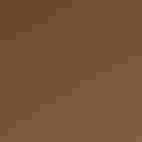Brown Creeper
At a Glance
Looking like a piece of bark come to life, the Brown Creeper crawls up trunks of trees, ferreting out insect eggs and other morsels missed by more active birds. It is easily overlooked until its thin, reedy call gives it away. Reaching the top of one tree, it flutters down to the base of another to begin spiraling up again. Creepers even place their nests against tree trunks, tucked under loose slabs of bark, where they are very difficult to find.
All bird guide text and rangemaps adapted from Lives of North American Birds by Kenn Kaufman© 1996, used by permission of Houghton Mifflin Harcourt Publishing Company. All rights reserved.
Category
Creepers, Tree-clinging Birds
IUCN Status
Least Concern
Habitat
Forests and Woodlands, High Mountains, Shrublands, Savannas, and Thickets
Region
Alaska and The North, California, Eastern Canada, Florida, Great Lakes, Mid Atlantic, New England, Northwest, Plains, Rocky Mountains, Southeast, Southwest, Texas, Western Canada
Behavior
Flitter, Undulating
Population
11.000.000
Range & Identification
Migration & Range Maps
May migrate in small flocks. In many areas, migration peaks in April and in late September to early October.
Description
5-5 3/4" (13-15 cm). Behavior unmistakable, creeping up tree trunks and limbs like a piece of bark come to life. Streaked brown back, pale eyebrow, whitish throat, rusty base of tail.
Size
About the size of a Sparrow
Color
Brown, White
Wing Shape
Broad, Rounded
Tail Shape
Multi-pointed, Wedge-shaped
Songs and Calls
A high-pitched, lisping tsee; song a tinkling, descending warble.
Call Pattern
Falling, Flat
Call Type
Buzz, Hi, Whistle
Habitat
Woodlands, groves, shade trees. Breeds in mature forest, either coniferous or deciduous, with many large trees, ranging from mountain pine woods to lowland swamp forest. In migration, may be found in any habitat with at least a few good-sized trees, even suburbs or city parks.
Sign up for Audubon's newsletter to learn more about birds like the Brown Creeper
Behavior
Eggs
5-6, sometimes 4-8. Whitish, dotted with reddish brown. Incubation is by female, about 14-17 days. Male may feed female during incubation.
Young
Both parents bring food for nestlings. Young leave nest about 13-16 days after hatching.
Feeding Behavior
Does almost all foraging on trunk and limbs of trees, climbing slowly with tail braced against surface, examining bark visually and probing in crevices. Occasionally forages on ground or snow.
Diet
Mostly insects. Feeds on a wide variety of insects, especially insect eggs and pupae hidden in bark; also weevils and other beetles, true bugs, leafhoppers, scale insects, aphids, caterpillars, ants, and many others. Also feeds on spiders and pseudoscorpions. Eats some seeds, and will feed on suet or peanut-butter mixtures.
Nesting
Male defends nesting territory by singing. In courtship, male may perform rapid twisting flight among trees; may pursue female in the air and around tree trunks. Nest: Usual nest site is behind a large strip of bark still attached to a tree; occasionally in cavity in tree. May be at any height from very low to 50' or more above ground. In typical sites, nest is a shallow half-cup, closely fitting the available space behind the bark slab. Nest (built by female, with male bringing some material) is made of twigs, bark strips, moss, leaves, lined with finer materials.
Conservation
Conservation Status
Declined as a breeding bird in much of eastern United States with cutting of forests; nests mainly in mature forest, not young second growth. Still common locally in north and west.
Climate Threats Facing the Brown Creeper
Choose a temperature scenario below to see which threats will affect this species as warming increases. The same climate change-driven threats that put birds at risk will affect other wildlife and people, too.




